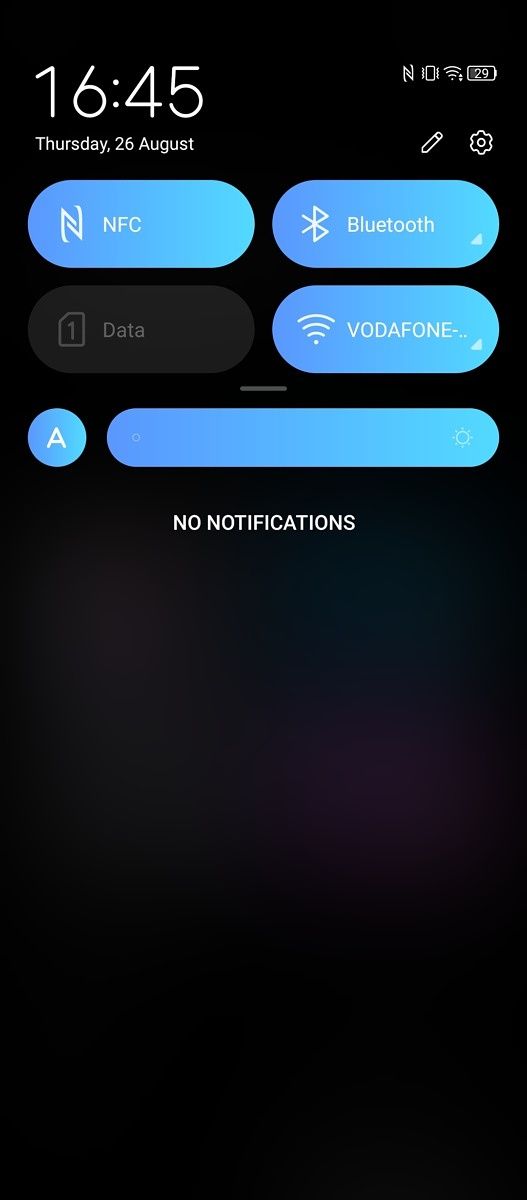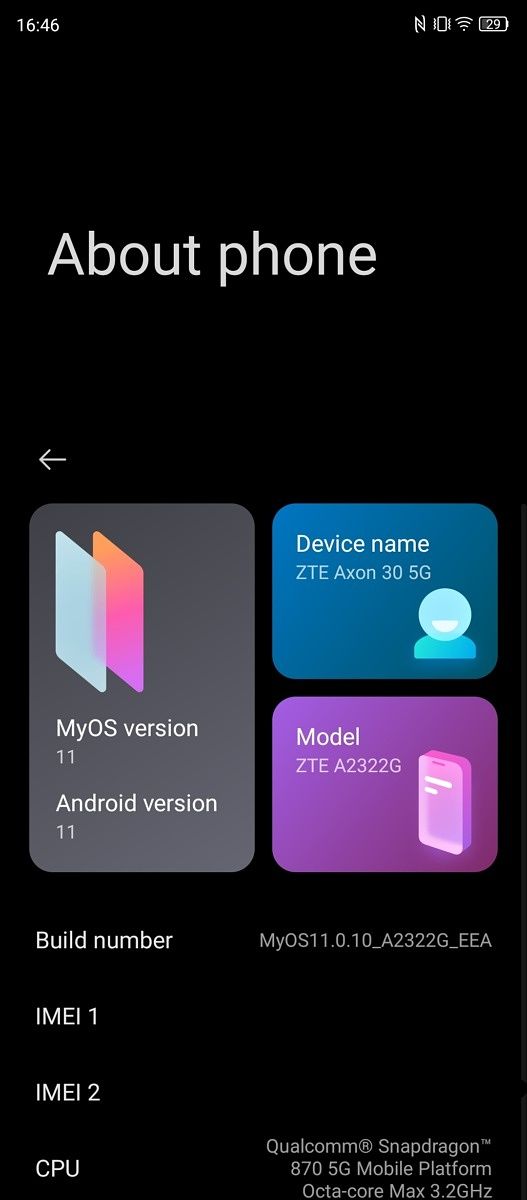ZTE Axon 30 Hands-on: An under-display camera that stays out of sight, out of mind
Pop-up cameras and notches are more or less a thing of the past, and the hole-punch camera has taken their place. While it’s nowhere near as aesthetically pleasing as a purely bezel-less experience, they have been the best option for anyone looking for a minimal bezel in a smartphone for the past year. However, the ZTE Axon 20 last year offered one of the first under-display cameras in a smartphone on the market, although it was somewhat underwhelming. Now its successor is here, and it’s a much bigger improvement than I had hoped for.
The ZTE Axon 30 isn’t the most flagship of smartphones — you’ll want to go to the ZTE Axon 30 Ultra for that — but the Qualcomm Snapdragon 870 that powers this particular device is certainly good enough. Think of it as a souped-up version of the Snapdragon 865 that powered flagships last year; it’s more than good enough.

About this hands-on: ZTE sent us the Axon 30 for review on the 16th of August. ZTE had no input regarding the content of this article.
ZTE Axon 30: Specifications
| Specification | ZTE Axon 30 |
|---|---|
| Dimensions and Weight |
|
| Display |
|
| SoC |
|
| RAM and Storage | 8GB RAM + 128GB UFS 3.1 storage |
| Battery & Charging |
|
| Rear Camera |
|
| Front Camera |
|
| Ports | USB Type-C port |
| Connectivity |
|
| Security | In-display fingerprint reader |
| Software | Android 11 with MyOS 11 |
The ZTE Axon 30’s display is much improved

The notchless experience of the ZTE Axon 30 is one of my favorite parts of this smartphone, and it’s something I haven’t really got to experience in a long time. It’s only 1080p which is a little bit disappointing (but fine on pretty much any display of this size), and it makes up for that by being a 120Hz AMOLED panel that still looks pretty good even on the large 6.7 inch display. It provides a nice viewing experience as is, and watching Netflix and YouTube on the ZTE Axon 30 is a nearly-unrivaled experience purely for the lack of a hole punch or notch. Very few devices on the market actually have under-display cameras, and the Xiaomi Mix 4 and the Samsung Galaxy Z Fold 3 are two of the only ones that exist.
The notchless experience of the ZTE Axon 30 is one of my favorite parts of this smartphone

The notchless display experience on the ZTE Axon 30 is much improved over the Axon 20. If you remember, the status bar on the Axon 20 was always set to black by default. However, on the Axon 30, it’s clear ZTE is a lot more confident in its design. The notchless display is enabled by default, so the matrix over where the front-facing camera goes is slightly visible, but only if you’re looking for it. It’s hard to see, especially when the screen is bright, unlike on the Axon 20 where the pixel density of the display over the camera was much lower to allow for more light to come through.
The display is reminiscent of pop-up camera devices like the OnePlus 7 Pro, which had one of my favorite displays on a smartphone ever. I’m a big fan of a completely unimpeded content experience, even if the hole-punch camera is easy to forget about at times.
The front-facing camera itself is lackluster…
Here’s the problem with front-facing cameras — they have to look through the glass screen to take a photo of you, which includes looking through part of the display too. The ZTE Axon 30’s front-facing camera is quite blurry and has a “bloom” effect like on the Axon 20. If I’m honest, it feels like the same camera as on the Axon 20. The quality seems more or less the same, and the biggest improvement is how the camera is hidden in general usage. Even when compared to the Xiaomi Mix 4, the difference is just night and day.
All of the photos below are compressed, but the overall quality of the photos is still easy to make out.




The ZTE Axon 30 blooms a lot, and really struggles with additional light sources. “Bloom” in photographs refers to the halo-like effect which is visible around light sources in photos and is a problem in particular on under-display cameras. In the above photos, light sources appear as a bright halo with defects that surround it, and that’s par for the course when it comes to these types of cameras.
This is very much a phone with a selfie camera for people that don't like to take selfies
When compared against other under-display cameras, it’s clear the Mix 4’s selfie camera is above and beyond what the Galaxy Z Fold 3 and the Axon 30 produces. However, the Axon 30 is, in my opinion, above what the Galaxy Z Fold 3 can do, but Samsung’s latest foldable obviously has the advantage of being able to use the outer-primary camera as a selfie camera if you really want to.
But the back camera is excellent
The primary sensor on the back has really impressed me, and I’ve enjoyed it a lot more than I thought I would. It’s definitely a flagship-grade camera and one you can’t really be disappointed with. It’s clear ZTE understands photography, and the improvements even in the Axon 30’s selfie camera over last year’s Axon 20 shows the company is serious about improving.
The photos below are compressed, but give you an idea of the dynamic range and color output that the Axon 30 is capable of.






MyOS 11 looks exactly like Android 12, even though it is based on Android 11




ZTE’s custom Android variant isn’t all that bad, and that’s thanks to MyOS 11 looking more or less exactly like Android 12’s most recent betas do. It’s a pretty clear influence, and I’ve been enjoying using it a lot more than I thought I actually would. It has a lot of useful features and looks nice, although it’s worth mentioning ZTE isn’t known for great support windows. Software updates may be scant at times, but if you’re okay with that then there are no other real complaints I have here.
The Axon 30 performs just as well as pretty much any other reasonably powerful device released in 2021. It’s certainly nowhere near as over-the-top as some Android variants other OEMs make, and it’s an improvement over ZTE’s older MyOS that the Axon 20 launched with which I already quite liked. The phone’s performance is also exactly in line with what to expect from the Snapdragon 870 — it’s a step above the 865+ from last year, but not by a noticeable amount. It’s certainly good enough though for basically anyone.
The Axon 30 performs just as well as pretty much any other reasonably powerful device released in 2021
Finally, the company also packs a 65W charger in the box, charging the phone from 0% to full in about 40 minutes.
The ZTE Axon 30 is still a niche smartphone
The Axon 30’s selfie camera is very out of sight, out of mind, but it’s still nowhere near the capabilities of regular front-facing cameras. It does the job for video calls and quick pictures, but I’d never rely on it for taking snapshots of anything “important”. It’s a means to an end in order to have a completely bezelless, no-hole-punch experience, and it achieves that quite well as a result. If you value a selfie camera, then I can’t stress enough how much this phone is not for you.
- The ZTE Axon 30 is a pretty great option if you don't care about selfie quality too much, especially if you want an all-screen smartphone experience.
|
Features: |
|
|
|
Pros: Cons: |
However, if you don’t care about the selfie camera, then there’s no reason to not get the Axon 30. The area over the camera is no longer an eyesore and blends into the rest of the display, and it’s good enough for the occasional video call if required. The primary camera is excellent, the performance thanks to the Qualcomm Snapdragon 870 is also stellar, and a starting price of €499 places this device in a pretty competitive space.
The post ZTE Axon 30 Hands-on: An under-display camera that stays out of sight, out of mind appeared first on xda-developers.
from xda-developers https://ift.tt/3hjQzd5
via IFTTT

Aucun commentaire: